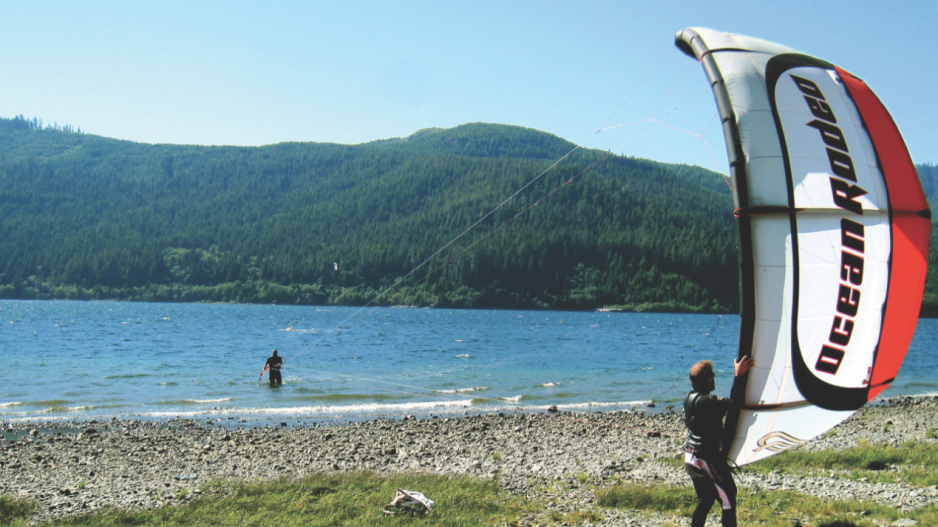Maryam Moghaddas calls it “the paradise.” She’s part of a community of windsurfers who go to a very special Vancouver Island location year after year, drawn by the reliable wind and the isolated beauty of Nitinat Lake.
“I remember the first time … driving down that windy road, getting lost between which fork should we take … and I’m like, ‘Where are we going, where are we going?’” the Vancouver resident recalled. “Then you get there and there are trees, trees, trees, and then suddenly you walk onto the beach and there’s this fantastic, beautiful lake.”
Adrien Grelon, who has windsurfed at Nitinat the last two summers, agreed.
“It’s a pretty special place. And what’s nice is that it’s under the radar,” he said, noting there’s no cellphone reception.
In summer the difference in temperature between the warmer east side and cooler west side of Vancouver Island produces remarkably consistent winds on the lake that start up at around 10 a.m. and die down in the evening, making it a favourite spot for windsurfers and kiteboarders. The lake, located north of Carmanah Walbran Provincial Park, is also a destination for fishermen and hikers.
It’s a hidden jewel that the 770-member Ditidaht First Nation would like more people to know about. The long, narrow lake, which enters the ocean at Nitinat Narrows and is technically a saltwater fjord, is within the First
Nation’s traditional territory. About 200 Ditidaht members live in a village at the northeast end of the lake.
The First Nation already operates a motel and two camping sites, and rents kayaks and paddleboats.
But while the nearby rugged West Coast Trail is a well-known B.C. attraction, not very many people outside of the windsurfing and kiteboarding community know about Nitinat, said Cindy Stern, executive director of the Ditidaht Development Corp.
“What we want to do is build and promote more activity around Nitinat to expand beyond the current users,” Stern said.
“There’s amazing hiking all around there and you can use Nitinat as a base to go hiking into the Carmanah. There’s huge opportunity for fishing, hiking and watersports and that’s one of the things we’re working on: marketing the destination and branding the variety [of activities].”
The development corporation operates www.westcoasttrail.com, which allows visitors to book accommodation online, but it’s planning a new website and increased marketing to promote Nitinat Lake as a destination in its own right.
While visitors like Moghaddas and Grelon say they love the remoteness of the location, it’s a hurdle for economic development. Just getting to the lake can be a challenge, as it can only be accessed by a dirt forestry road. The road is the responsibility of forestry companies, so is well-maintained only when logging operations are active; heavy rains can also make the road difficult to navigate.
As part of its continuing treaty negotiation, the Ditidaht is in talks with the B.C. government to improve maintenance of the road. It’s unlikely the road will be paved soon, but most Nitinat enthusiasts say the remote
location is part of the charm.
“We want to capture people who are interested in a really unique, remote outdoor experience,” Stern said.
@jenstden




